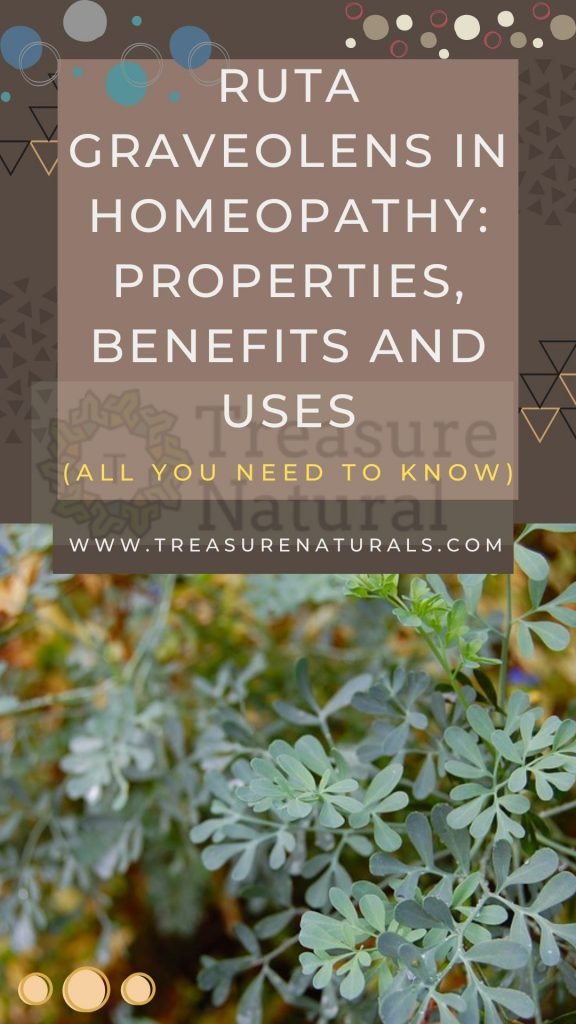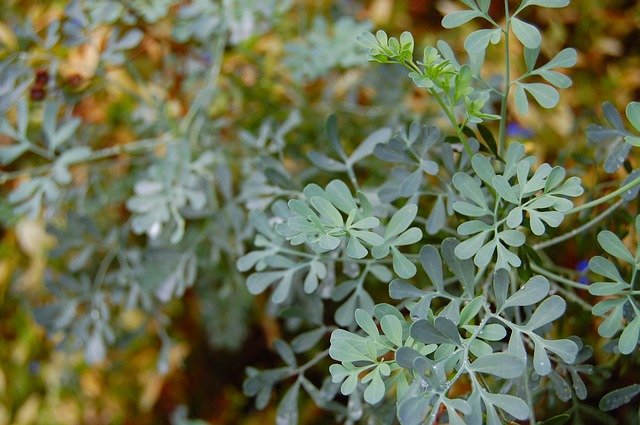
The homeopathic remedy Ruta graveolens is obtained from the homonymous plant, also called Ruta grass, belonging to the Rutaceae family. In Homeopathy it is one of the most important remedies for the treatment of deep pain, especially in case of traumatism due to repeated muscular and tendon efforts, which are also reflected on the periosteum.
Ruta graveolens: history and chracteristics of the plant
Ruta, whose scientific name is Ruta graveolens, is a plant well known above all for its therapeutic properties. It is a perennial herbaceous plant, with rather branched stems up to a meter high. The leaves are tripennate and contain a sour oil that has many uses. The flowers are small, inconspicuous, yellow in color and the fruits are capsules containing numerous seeds. The sap of the plant can cause skin irritation.
This plant is native to southern Europe, although it later spread throughout the world. It grows in grassy places, along walls, and is also grown. In Italy it is present spontaneously, in all regions, except the islands (where it is found only in vegetable gardens and gardens).
In the past it enjoyed great fame in the medicine of the Greeks and Romans as in the Salerno Medical School. The ancient Greeks used it mainly against indigestion, while the Romans considered it a sacred plant. It was also known as the plant that was given to Ulysses to resist the attacks of the sorceress Circe. The Roman philosopher and writer Aelianus, in his natural history, writes that the weasel, when he wants to face a snake, uses to eat the Ruta as a natural antidote to its poison.
Folk medicine has used Rue to treat cough, diphtheria laryngitis, colic, headaches and as an antidote in case of mushroom poisoning, snake bites and insect bites.
In the Middle Ages, however, the Rue was used to ward off the plague: its smell is in fact very strong and pungent. It was also used in some medieval rites to protect the house against negativity.
Here is a little curiosity: legend has it that Leonardo attributed his extraordinary visual abilities to the Ruta and that Michelangelo believed that this plant had the power to improve eyesight! Actually the rinses with an infusion of this herb restore well-being to the tired eyes and the remedy is also used for those who, because of their work, tend to strain the eyes.
Ruta graveolens: homeopathic remedy and properties
The homeopathic remedy Ruta graveolens, used since about 1820, is obtained from the juice extracted from the fresh plant before it blooms. Ruta graveolens is an often overlooked remedy that was first experienced by Hahnemann himself.
It is a homeopathic remedy indicated in many clinical conditions and is traditionally used in the following cases:
- bone pains;
- bruises of the periosteum (membrane lining the bones);
- asthenia;
- osteoarthritis and rheumatic diseases;
- swelling resulting from bruises;
- overexertion of the eye muscles;
- traumatism;
- asthenopia;
- prolapse of the rectum.
Ruta graveolens has a deep action that can also modify the mental state of the patient who through the action of the remedy no longer appears depressed and grumpy (a characteristic that distinguishes him, as we will see later).
The homeopathic remedy ruta graveolens for trauma
Doing sports is absolutely recommended to keep fit and healthy: swimming, playing tennis, running even help to keep diseases such as osteoarthritis and diabetes under control.
Of course, only those who do not practice sports are safe from small accidents along the way, it often happens that sports activity can cause trauma, sprains and cramps.
Homeopathy is a true ally of sportsmen, so much so that there are some homeopathic remedies considered irreplaceable by sportsmen just like Arnica montana which has anti-inflammatory and analgesic properties. Ruta graveolens is also a remedy widely used in traumatology for its action on the ligamentous systems, fibrous tissues, periosteum. This remedy is also indicated for contractures of the shoulders and back.
Even when visual fatigue occurs, although in this case we do not speak strictly of trauma, the remedy Ruta graveolens is very useful!
Ruta graveolens: constitutional type

Generally the Ruta graveolens type has dark brown hair and a tired and fatigued expression. He suffers from the lack of tranquility that drives him to unbridled activity. He often feels discontented and shows it openly to everyone.
Usually this subject when he is sick feels depressed and dissatisfied. In addition, it often happens that he is anxious and critical of others.
Below are the main characteristics of the remedy in reference to the subject for whom it is particularly indicated:
General action:
- periosteum;
- periarticular tissues;
- oculomotor apparatus.
Generality:
Causality: trauma to the tendons. Visual fatigue in conditions of insufficient lighting. Feeling of contusion and stiffness. Impression that the tendons are too short.
Main clinical indications:
- sprains, lumbosacralgia, sacral trauma (coccygodynia), synovial cysts of the wrist;
- asthenopia secondary to meticulous work in conditions of poor lighting or even for prolonged use of the pc;
- prolapse of the rectum as a result of exertion.
Usually the symptoms presented by this constitutional type are aggravated with rest and wet cold, while they improve with movement and heat.






